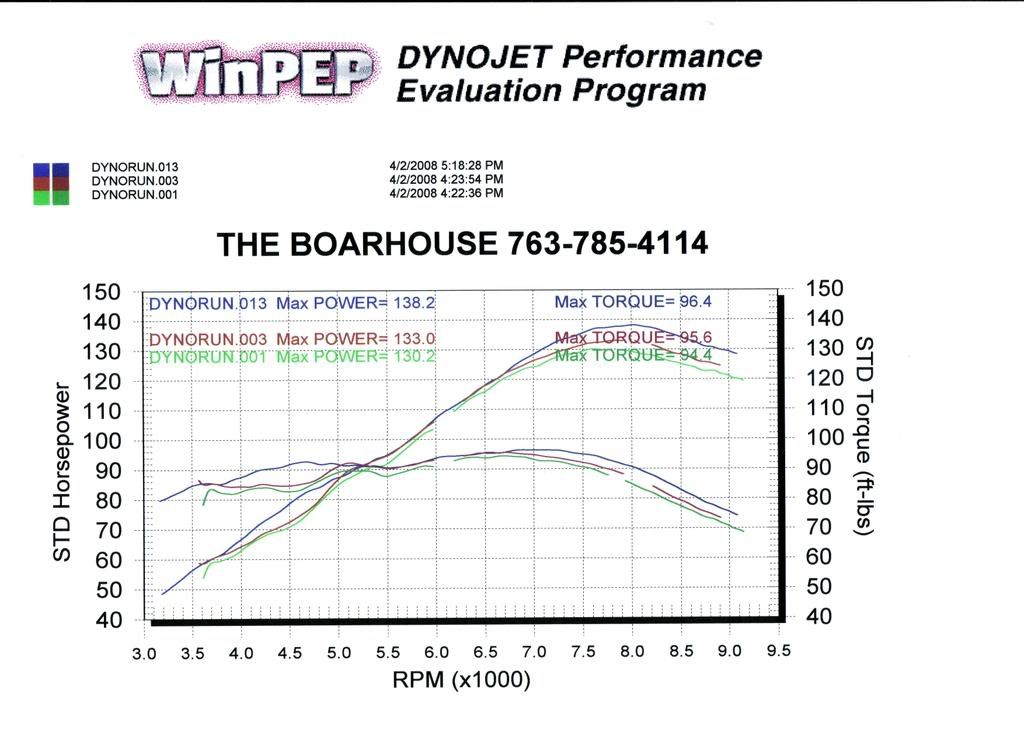I just read the info about air box resonance. It's generally based on a combination of air box volume, inlet snorkel length and inlet snorkel cross-sectional area, so the air box mods most likely shift the resonance frequency. This would cause a shift in which RPMs get the most boost from the air box resonance. However, the formulas given are presented as estimates and that actual trial and error testing is also needed to fine tune the dimensions (probably because there's many other factors that contribute in less predictable ways). All this to say that it's quite complicated and difficult to calculate the effect of modifying the air box.
Luckily, predictions and calculations are not necessary if you have measurable results. I know of two sets of real world results that show a large improvement to mid-range torque by modifying the airbox and adjusting fuel. First there's Wicked Webby's dyno results - big gains in the 4.5k RPM area.
I also have the fuel injection map from my Motty AFR Tuner. I have 100% throttle tuned to 13.2:1 AFR. I believe this is the same AFR that is generally used as a target when PCIII's are mapped for 100% throttle. The PCIII map from DynoJet for stock FJRs actually decreases fuel across the RPM range for 100% throttle. With my modded air box, the Motty has similarly decreased fuel across the RPM range for 100% throttle... except for about 3.5k to 5k RPMs, where it actually ADDED fuel as compared to stock. This means that there is more airflow into the engine in that RPM range and, combined with more fuel, more boom in the combustion chamber.
Webby's dyno chart does not show what happened below about 3.5k RPMs, so it is possible that the stock air box is tuned for resonance in the very low RPM range and that the mod moved it up into the mid range. If that is true, then there would be a loss of torque in those low RPMs. However, you don't really do much 100% throttle high acceleration below 3.5k RPMs, and I haven't noticed any loss of torque down in that range. It is possible that I am just opening the throttle more in that RPM range to make up for loss in torque, but I haven't hit the ceiling of 100% throttle in the low RPMs feeling like there should be more.
But, all my information is about a different air box mod than the one mentioned by the original post, so it is probably irrelevant. Let's get back to the original post.
1. Yes, a modified air box creates more intake noise. Most of the additional noise only occurs at large throttle openings. It's also not really that loud relative to the other other loud stuff happening in those conditions (exhaust, wind, shouting "WEEEEEEEE!", etc), so it doesn't bother me. I might even like it

2. Someone needs to volunteer to get before & after dyno results with a PCIII using a stock map before the air box mod, then a PCIII with a custom map after the air box mod. This will be the only way to verify the gains and losses across the RPM range. The diminished low-RPM throttle response could be perceived relative to an increase in the mid range, or it could be caused by improper fueling and could be improved by a custom mapped PCIII. It could also be completely psychological like perceived gains that some people have where there are no gains or even losses.
3. Maybe you've been opening the throttle more to enjoy the gains of the mod? It is also possible that improved airflow could reduce gas mileage. With improved airflow, you might need to open the throttle less to get the same amount of torque. Smaller throttle openings create more disturbance in the airflow and can reduce the efficiency of the air and fuel mixing. Some cars actually run the engine coolant through the air box to purposely warm up the air and cause you to open the throttle more, leading to better fuel mileage, but less available torque at 100% throttle.
































































